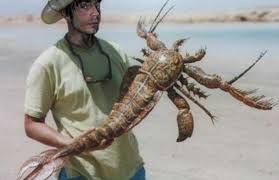That’s certainly true of the recently discovered Pentecopterus, a giant sea scorpion with the sleek features of a penteconter, one of the first Greek galley ships. A University research team says Pentecopterus lived 467 million years ago and could grow to nearly six feet, with a long head shield, a narrow body, and large, grasping limbs for trapping prey. It is the oldest described eurypterid — a group of aquatic arthropods that are ancestors of modern spiders, lobsters, and ticks.
“This shows that eurypterids evolved some 10 million years earlier than we thought, and the relationship of the new animal to other eurypterids shows that they must have been very diverse during this early time of their evolution, even though they are very rare in the fossil record,” said James Lamsdell, a lead author of the study.
“Pentecopterus is large and predatory, and eurypterids must have been important predators in these early Palaeozoic ecosystems,” Lamsdell said.
The fossil-rich site yielded both adult and juvenile Pentecopterus specimens, giving the researchers a wealth of data about the animal’s development. In addition, the researchers said, the specimens were exceptionally well preserved.
Derek Briggs, co-author of the study said “The fossils are preserved in fine deposits of sediments where the sea flooded a meteorite impact crater just over 5 km in diameter.”.
“What’s amazing is the Winneshiek fauna comprise many new taxa, including Pentecopterus, which lived in a shallow marine environment, likely in brakish water with low salinity that was inhospitable to typical marine taxa,” said Huaibao Liu who led the fossil dig and is a co-author of the paper. “The undisturbed, oxygen-poor bottom waters within the meteorite crater led to the fossils’ remarkable preservation. So this discovery opens a new picture that is significantly different from normal marine faunas.”
Source: Science Daily
N.H.Khider

